Volume 70, Issue 2
Displaying 1-14 of 14 articles from this issue
- |<
- <
- 1
- >
- >|
Photogravure
-
Article type:
Subject area:
2003 Volume 70 Issue 2 Pages 86-87
Published: 2003
Released on J-STAGE: April 22, 2003
Download PDF (222K)
Reviews
-
Article type:
Subject area:
2003 Volume 70 Issue 2 Pages 124-128
Published: 2003
Released on J-STAGE: April 22, 2003
Download PDF (82K)
Originals
-
Article type:
Subject area:
2003 Volume 70 Issue 2 Pages 129-134
Published: 2003
Released on J-STAGE: April 22, 2003
Download PDF (105K) -
Article type:
Subject area:
2003 Volume 70 Issue 2 Pages 135-140
Published: 2003
Released on J-STAGE: April 22, 2003
Download PDF (139K) -
Article type:
Subject area:
2003 Volume 70 Issue 2 Pages 141-150
Published: 2003
Released on J-STAGE: April 22, 2003
Download PDF (105K) -
Article type:
Subject area:
2003 Volume 70 Issue 2 Pages 151-156
Published: 2003
Released on J-STAGE: April 22, 2003
Download PDF (77K) -
Article type:
Subject area:
2003 Volume 70 Issue 2 Pages 157-164
Published: 2003
Released on J-STAGE: April 22, 2003
Download PDF (233K) -
Article type:
Subject area:
2003 Volume 70 Issue 2 Pages 165-171
Published: 2003
Released on J-STAGE: April 22, 2003
Download PDF (111K)
Reports on Experiments and Clinical Cases
-
Article type:
Subject area:
2003 Volume 70 Issue 2 Pages 172-174
Published: 2003
Released on J-STAGE: April 22, 2003
Download PDF (103K) -
Article type:
Subject area:
2003 Volume 70 Issue 2 Pages 175-178
Published: 2003
Released on J-STAGE: April 22, 2003
Download PDF (170K)
Notes for Clinical Doctors
-
Article type:
Subject area:
2003 Volume 70 Issue 2 Pages 179-182
Published: 2003
Released on J-STAGE: April 22, 2003
Download PDF (193K) -
Article type:
Subject area:
2003 Volume 70 Issue 2 Pages 183-185
Published: 2003
Released on J-STAGE: April 22, 2003
Download PDF (24K)
Case Record from Nippon Medical School
-
Article type:
Subject area:
2003 Volume 70 Issue 2 Pages 186-190
Published: 2003
Released on J-STAGE: April 22, 2003
Download PDF (305K)
-
Article type:
Subject area:
2003 Volume 70 Issue 2 Pages 203
Published: 2003
Released on J-STAGE: April 22, 2003
Download PDF (15K)
- |<
- <
- 1
- >
- >|
